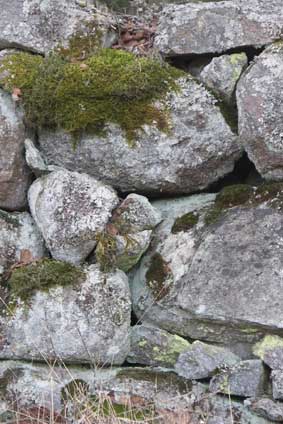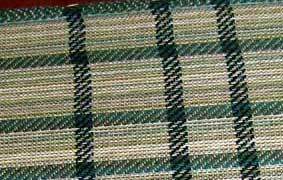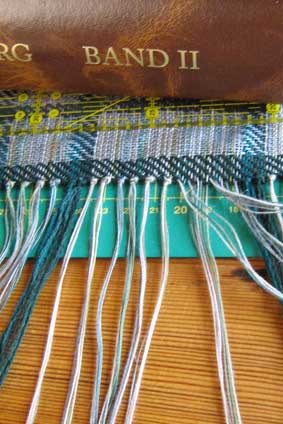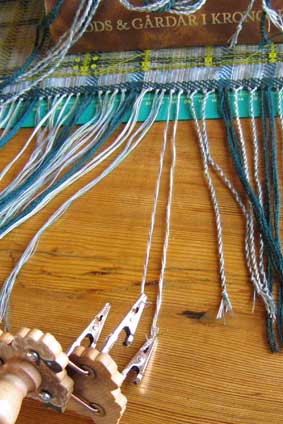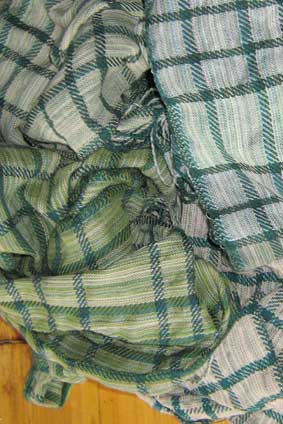The making of a "stone wall"
I live in Småland, in the south of Sweden.One characteristic of Småland is the stone wall - they are everywhere, enclosing fields and pastures. They can also be found in the forests - then they indicate that this forest is planted an the site of an old farm.
I thought it should be possible to weave shawls with inspiration from this the most common local thing.
What are the characteristics of a stone wall?
It is not as grey as one often think - there is usually moss growing on it. The stones are of many
different sizes, and it is never smooth. (See many more stone walls
here).
So - I chose a "bumpy" weaving technique, that relies on the fact that wool will shrink, but
cotton will not. (See more bumpy shawls
here).

